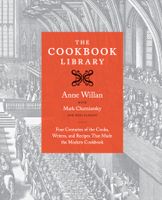The English Cookbook Boom
By Anne Willan
Published 2012
The seventeenth century saw a permanent split in English cookbook styles that was to become characteristic. On the one hand were domestic books, often written by women and designed for the housewife running a busy household, who might or might not also be the cook. The recipes in these books were simple, sometimes just a few lines, and they used ingredients that were readily available. Authors covered all the skills needed to run a small household, from concocting remedies for the sick to making cheese and butter. They emphasized preserving, candying, and growing produce at home, and they grounded their instructions in concerns about economy, health, and diet. On the other hand were cookbooks written by professional cooks, almost always male, who controlled staffs into the dozens. They offered creative, fashionable menus designed to please the master or client, making the most of expensive ingredients and gearing their dishes to make an impressive show at table. Readers included not just the master but also fellow professionals, a growing band of caterers, pastry cooks, and vendors of ready-prepared food. Both genres of cookbook flourish today, with offshoots in many directions but still clearly separate audiences.
Part of
Advertisement
Advertisement


